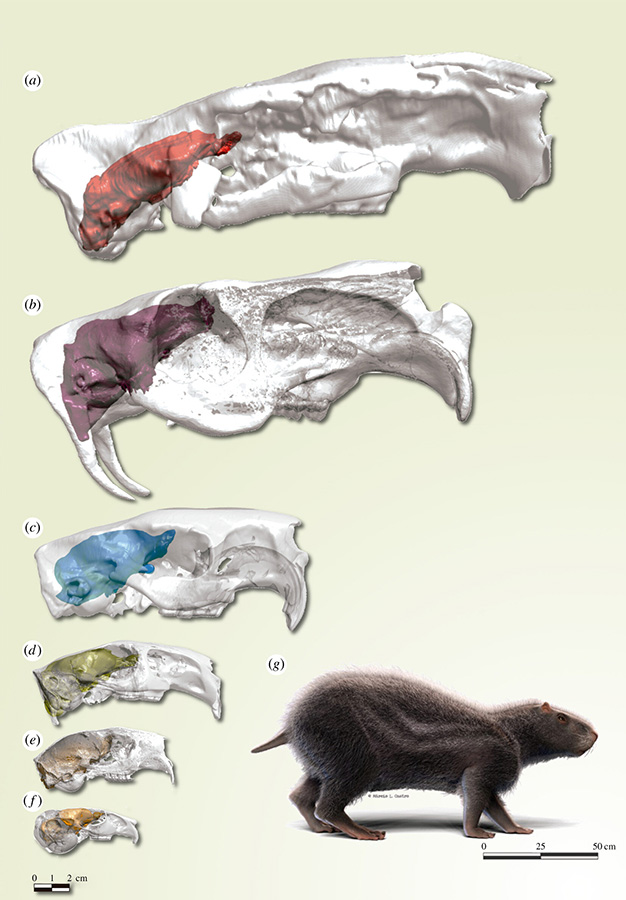Neoepiblema acreensis: Giant Extinct Ancient Rodent Had a Tiny Brain

A team of researchers with Universidade Federal de Santa Maria, Universidade Federal do Acre and the Paleontological Institute and Museum has discovered the ancient remains of a giant, extinct, tiny-brained rodent that once lived in South America. In their paper published in the journal Biology Letters, the group describes the skeletal remains they found and how the rodent likely appeared when alive.
While working in the State of Acre in what is now Brazil, the researchers uncovered an almost complete skull and a fragment of another skull from a previously unknown creature. That creature turned out to be the largest rodent ever known to have lived in South America. The researchers named the find Neoepiblema acreensis.
The nearly complete skull was in very good condition—it was so well preserved that the researchers were able to make out impressions made by the olfactory bulbs, which are parts of the brain involved in processing odors. They were also able to see where the frontal and temporal lobes had been. By looking at the size of the skull, the researchers were able to calculate the likely overall size of the rodent. They estimate the creature was approximately 1.5 meters in length and weighed approximately 80 kilograms—making it approximately the size of a full-grown human being. It also had very large incisors.
Further study of the skulls showed them both to be approximately 10 million years old. They also found that the creatures were extinct relatives of the modern pacaranas and chinchilla and that they lived in the western part of Brazilian Amazonia. Back then, before the area was a rainforest, it was a swamp, and South America was still cut off from both North America and Antarctica. The researchers also note that due to its large size, it was likely not the target of very many predators, though it would have made a nice meal for the giant crocodiles that lived in the area during the same time period. They also surmise that it was probably not very smart—its brain was small compared to the rest of its body, weighing in at just 113 grams.
Explore further: Oldest carnivorous dinosaur fossil unearthed in Brazil
More information: José D. Ferreira et al. Small within the largest: brain size and anatomy of the extinct Neoepiblema acreensis , a giant rodent from the Neotropics, Biology Letters (2020). DOI: 10.1098/rsbl.2019.0914
Journal information: Biology Letters
Source: https://phys.org/








